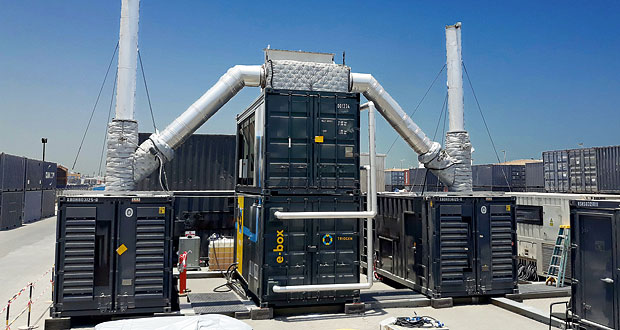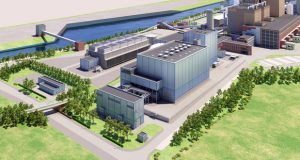The year 2019 was the turning point for renewable energy projects at remote mines. More than a dozen projects were commissioned or announced. Mining companies have adopted solar and wind power to reduce their energy cost and carbon footprint in a rather lengthy process.
In the last years, successful flagship projects have removed concerns about production loss and independent power producers (IPPs) have started financing solar and wind plants at remote mining sites. IPPs sell electricity to miners on a power purchase agreement (PPA) basis. To mining companies, the PPA cash-flow is similar to what they are used to from diesel contracts – but it comes with cost reductions. IPPs are highly specialized in electricity generation, they are also looking at other solutions for cost reduction. It is no surprise that diesel genset efficiency optimization have also sparked interest. Diesel engines only convert 40 % of the fuel energy into electricity, while the rest is not used. Waste heat recovery can reduce diesel consumption by approximately 7 %. The approach is based on conventional steam turbine technology, but advances have allowed this to be deployed at a smaller scale. It is already proven in applications like biogas engine heat recovery, biomass combustion, industrial waste heat, and geothermal heat.
“Waste heat recovery is the low hanging fruit in the diesel reduction game”, points out Thomas Hillig, Managing Director of THEnergy, a Germany-based management consultancy in Munich specialized in cleantech innovations. “Renewables have recently opened the door for new approaches because they have increased the acceptance of more capital-intensive solutions in the mining industry.” The report “System optimization of renewable energy microgrids with heat-recovery in remote mining” shows that heat recovery can also go hand-in-hand with renewable energy approaches for diesel reduction. In a time when cost optimization and carbon mitigation are gaining importance, the question is not which of the two solutions to choose. The answer is to combine both solutions together.
The Dutch manufacturer Triogen has developed a containerized “e-box”, a solution that is tailor-made for remote mine sites (Figure 1). It has been designed for easily upgrading any diesel genset without changing its operations and thus without affecting maintenance or warranty requirements. The solution is based on the conventional steam turbine technology, yet is fully automated, compact and simple to install. Two standard 20 ft shipping containers are connected to the exhaust gas stack of diesel gensets and the e-box generates electricity from the waste heat. The electricity is fed into the local grid, so that diesel gensets do not need to produce this power and subsequently consume less fuel.
Triogen’s technology has accumulated over 1 M operating hours on 50 installations. The e-box solution has successfully been field-tested for mining applications and is now being deployed at the remote site of a blue-chip mining company. Henning von Barsewisch, CEO of Triogen adds: “Our containerized e-box has created sustained awareness from mining companies, IPPs, diesel genset OEMs and rental companies because of its short payback time of two years and its quick and easy deployability.” Since the Triogen e-box converts waste heat, it is a zero-carbon technology which addresses the drive for cleaner mining. A single e-box saves 300.000 l/a of diesel. This is approximately the same as a 0.7 MW solar power plant in a rather sunny region. Annual CO2 reductions amount to 800 t per e-box. In the quickly growing market of renewable energy solutions for remote mines, efficiency improvements of gensets can generate competitive advantages for mining companies and energy providers by pulling all the cost-efficient diesel reduction levers of onsite power plants. (THEnergy/Si.)

